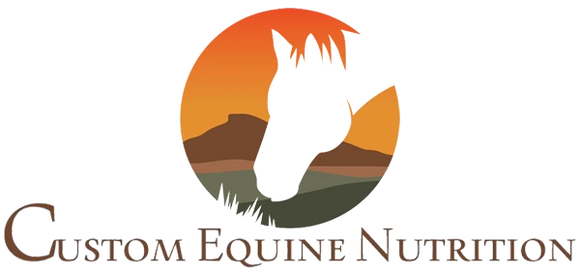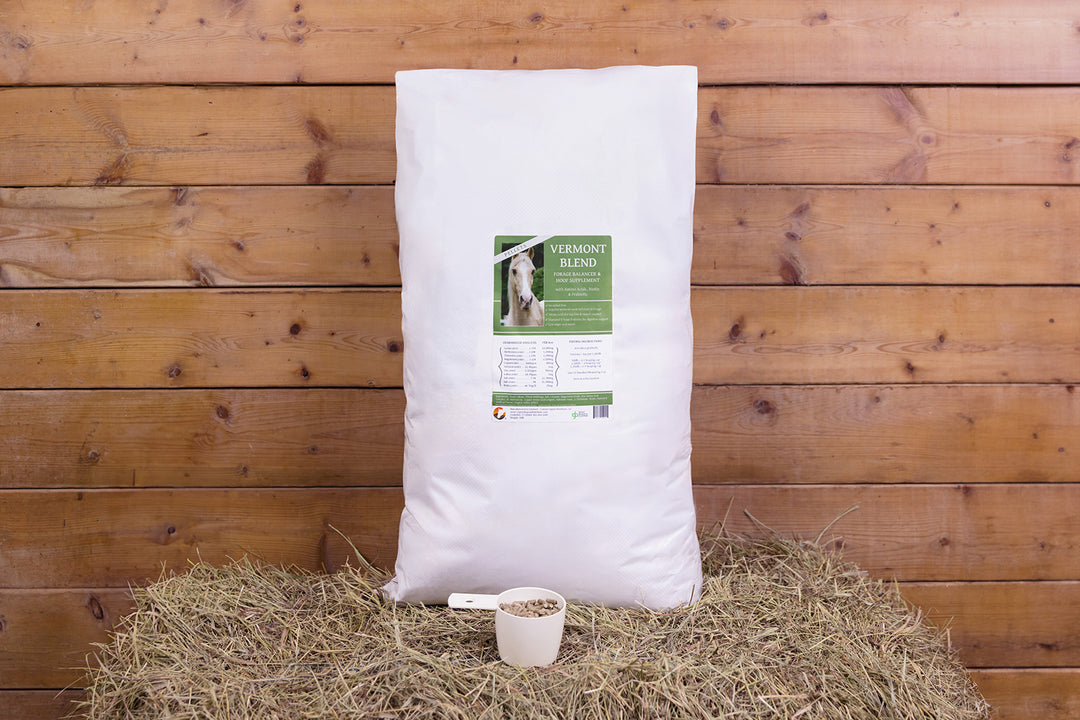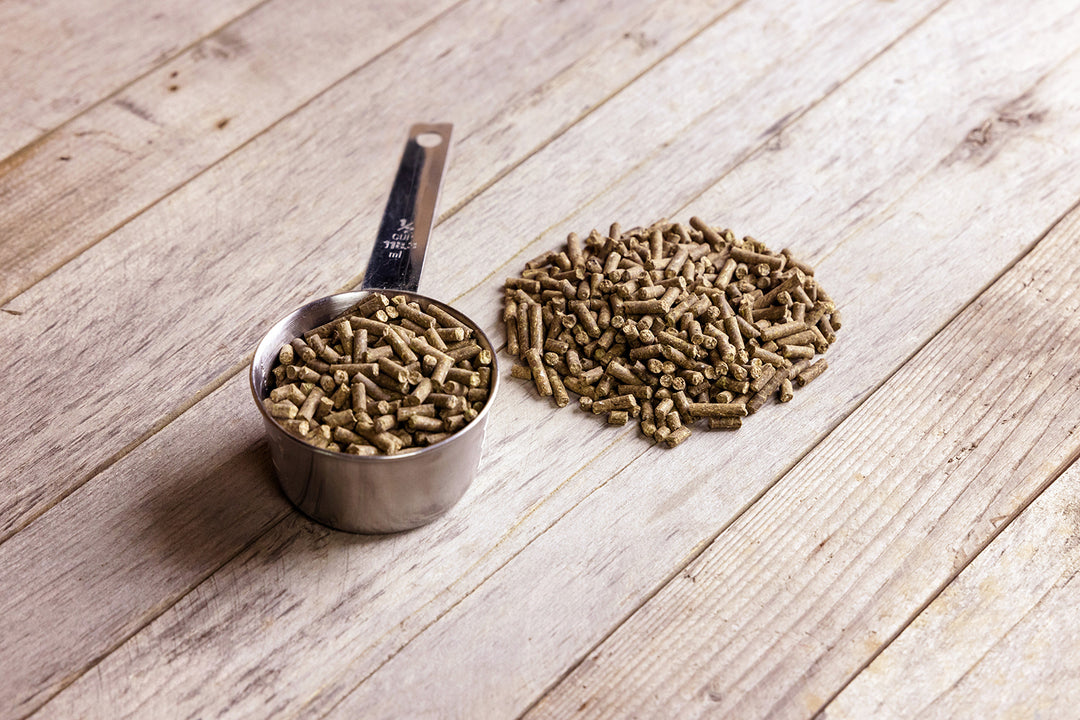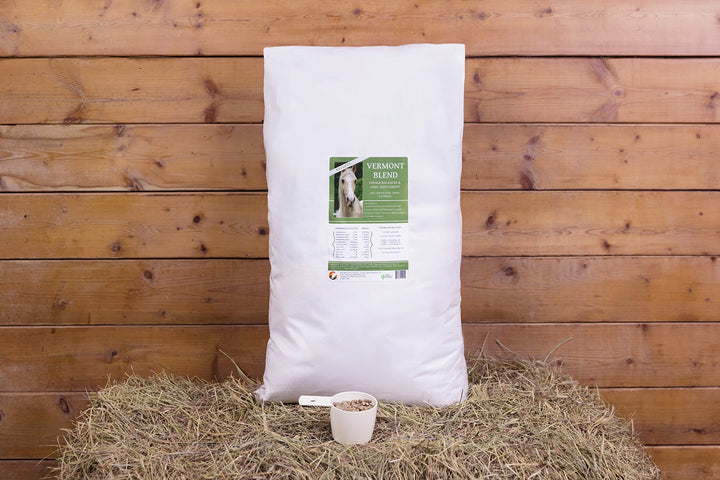GUARANTEED ANALYSIS PER 6oz
| Crude Protein (min) | 18.5% | |
| Lysine (min) | 6.25% | 10,000mg |
| Methionine (min) | 3.10% | 5,000mg |
| Threonine (min) | 1.53% | 2,000mg |
| Magnesium (min) | 3.62% | 6,000mg |
| Copper (min) | 1,600ppm | 300mg |
| Selenium (min) | 11.85ppm | 2mg |
| Zinc (min) | 5,322ppm | 900mg |
| Iodine (min) | 18.59ppm | 3mg |
| Salt (min) | 7.5% | 12,780mg |
| Salt (max) | 9% | 15,300mg |
| Biotin (min) | 66.7mg/lb | 25mg |
No scoop included. Use a standard US measuring cup as a scoop. One heaping measuring cup provides approximately six ounces by weight.
Introduce gradually.
| 500lb | 3oz (1/2 rounded cup) |
| 1,000lb | 6oz (1 rounded cup) |
| 1,500lb | 9oz (1.5 rounded cups) |
Benefits
Some of the benefits your horse will receive from Vermont Blend and how each ingredient plays a role
Benefits
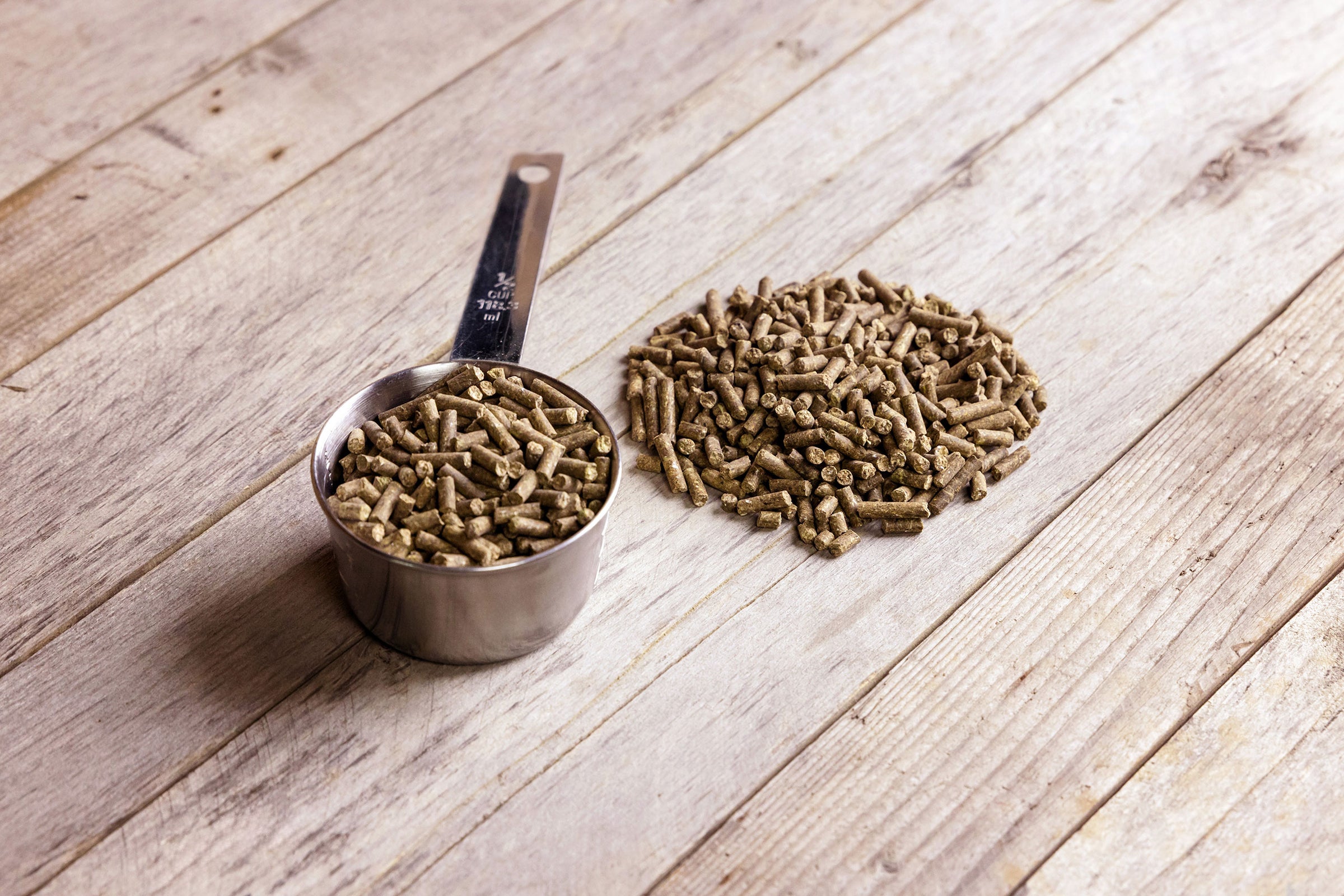
Vermont Blend Forage Balancer
Typically you will need three or more supplements to balance grass hay: trace minerals, magnesium and sodium. On top of that, horses who are lacking topline or have poor hoof quality can benefit from the addition of the amino acids that are most deficient in the equine diet. Lastly there is the digestive tract. A healthy digestive tract will play a role in all aspects of your horse's health. Including a prebiotic in your horse's diet ensures a healthy environment for all the beneficial microflora. When you combine these nutrients separately, you end up feeling like your own personal feed manufacturer, mixing this and that. Vermont Blend came about by wanting horse owners to have an easier way. The following chart shows average nutrient levels of hay.
Deficiencies in Hay
Hay is typically deficient in the following nutrients: Magnesium, sodium, copper, zinc, iodine and sometimes selenium. Long term nutrient deficiencies can result in subclinical symptoms such as poor hoof quality, dull fading coat, compromised immune system, exercise intolerance etc. In addition, excess iron can interfere with the absorption of other trace minerals that are already deficient (zinc & copper). The average grass hay has twice as much iron than recommended by the National Research Council (NRC) daily requirements. Vermont Blend supplies these minerals to ensure your horse is receiving his or her daily requirements.
Horses tend to love the taste thanks to Diamond V Yeast. The only ingredients you will find in Vermont Blend is what is needed, nothing more. Manufactured in Vermont. Vermont Blend is safe for horses requiring low sugar and starch diets.
A Bit About Amino Acids
Amino Acids are the building blocks of protein. Essential amino acids need to be supplied by the diet, horses can’t produce them on their own. If a horse doesn’t have enough of a certain amino acid, it can’t utilize any of the remaining amino acids present in its diet. Common signs of deficiency are lack of topline and hay belly. Vermont Blend provides the top three limited amino acids.
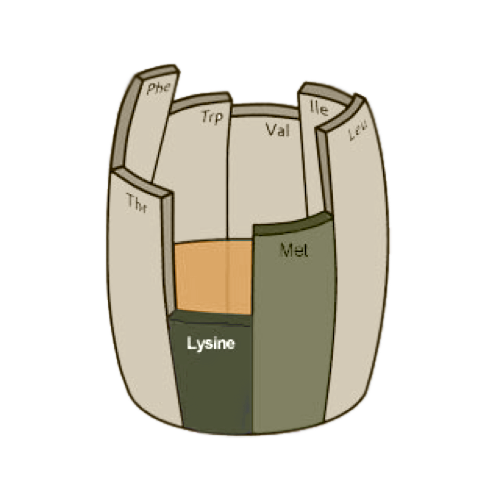
Magnesium and Calcium Ratio
Magnesium and calcium work together for nerve transmission and muscle contraction. The ideal ratio of magnesium to calcium is 1:1 – 1:2. When calcium is too high it will create an imbalance. Supplementing magnesium will create the proper ratio. Benefits of magnesium supplementation are a reduction of free radical damage, reduce fatty deposits (cresty neck), lowers circulating insulin levels (beneficial for EMS/IR horses), and stress reduction.
